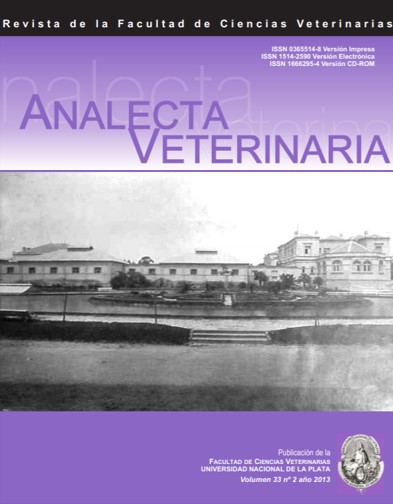Poisonous plants for cattle in Colombia: research perspectives
DOI :
https://doi.org/10.24215/15142590ep.%2033-41Résumé
Even though Colombian cattle-farming makes an important contribution to the national economy it also has great potential for growth; however, this activity is carried out in areas where animals may become naturally exposed to poisonous plants, affecting their health and production. It is recognised that some plants may damage the livestock sector in countries placing an important emphasis on cattle-rearing. Such problem has received scarce attention from academic research in Colombia, and the efforts made to do so date from the 1930s, 1940s, 1970s and 1980s without having had continuity. Many of the studies done in Colombia have been orientated towards establishing nitrate and cyanogenic glycoside content, ignoring other toxic metabolites. Likewise, certain vegetal species which can cause poisoning have not been fully studied, thereby hampering their management and treatment. It is thus important that studies are carried out in greater depth in Colombia concerning poisonous plants affecting livestock. A methodology is thus proposed which includes a search for initial information about suspicious plants, reproducing such poisoning experimentally (selecting the animal species, route, presentation and administration time, and evaluating effects) and searching for the chemical responsible for causing the poisoning. All these aspects are dealt with in the present review.
Publié
Numéro
Rubrique
Licence
Los autores/as conservan los derechos de autor y ceden a la revista el derecho de la primera publicación, con el trabajo registrado con la licencia de atribución de Creative Commons, que permite a terceros utilizar lo publicado siempre que mencionen la autoría del trabajo y a la primera publicación en esta revista.

Analecta Veterinaria por Facultad de Ciencias Veterinarias se distribuye bajo una Licencia Creative Commons Atribución-NoComercial-SinDerivar 4.0 Internacional.




























